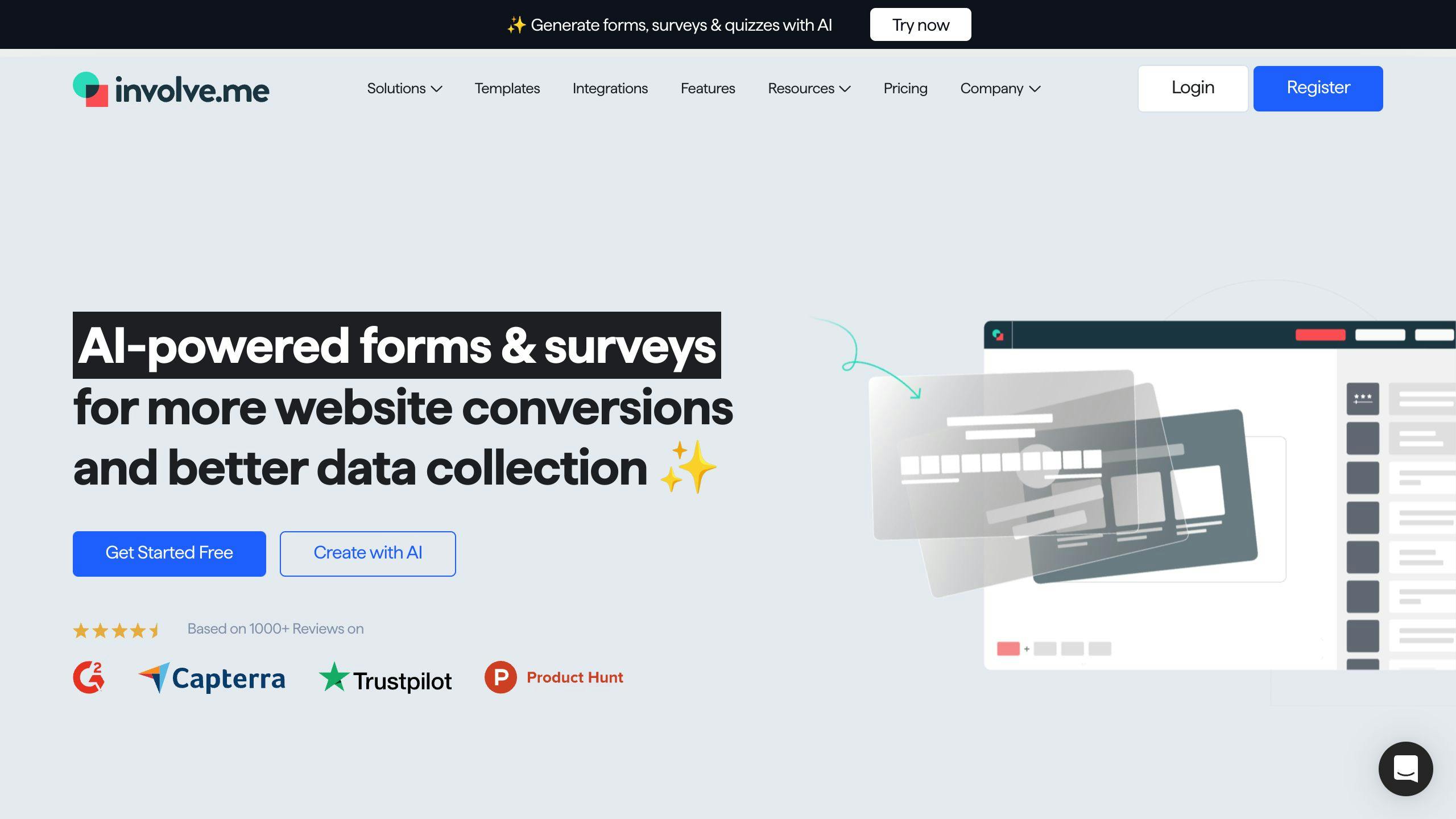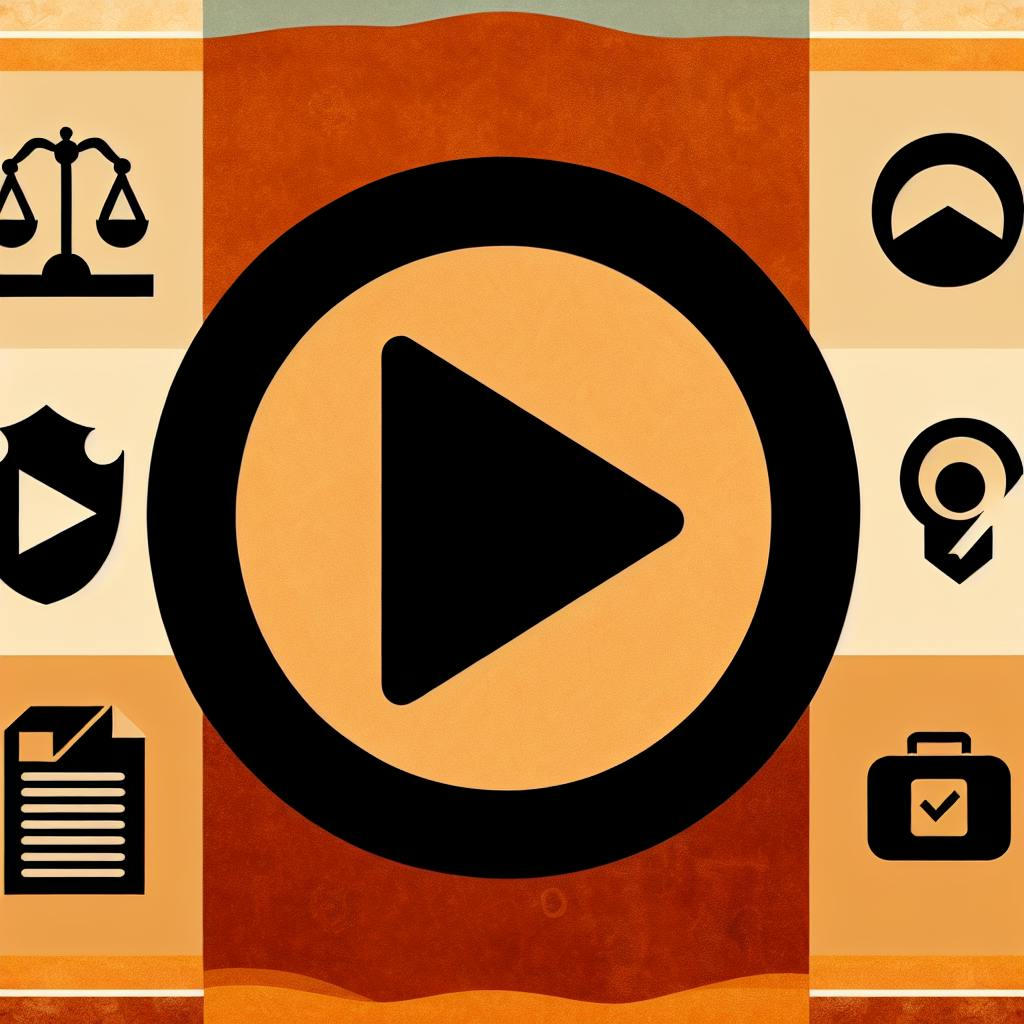Developing an online community focuses on authenticity and trust, key elements that make members feel safe, valued, and engaged. Here's a quick overview:
- Online Community Essentials: Communication, collaboration, shared identity, and inclusiveness.
- Three Pillars: Regular interaction, shared identity, and an inclusive environment.
- Authenticity's Role: Builds trust and encourages participation by being real and open.
- Building Trust: Essential for open dialogue, close friendships, and member retention.
- Strategies for Development: Be real, offer valuable content, engage in conversations, and listen to feedback.
- Case Studies: Involve.me and LinkedIn show successful community-building through exclusivity, customization, and engaging content.
- Challenges and Solutions: Encouraging participation, preventing toxic behavior, and fostering a positive community environment.
Building a trusting and loyal online community requires understanding your audience, providing value, engaging regularly, and continuously improving based on feedback.
Defining an Online Community
An online community is basically a bunch of people who regularly talk and share stuff online because they care about the same things. Here’s what makes up an online community:
- Communication: People chat a lot through messages, comments, and discussions. It’s all about swapping ideas and getting to know each other.
- Collaboration: Folks team up to work on things, share what they know, and help each other out. Everyone’s in it together.
- Shared identity: Everyone feels like they’re part of the group because they share common interests or goals. It’s like being on the same team.
- Inclusiveness: The space is welcoming and positive, so everyone feels okay being themselves and joining in.
Three Pillars of Online Communities
Great online communities stand on three main things:
Regular interaction - It’s important for people to keep talking and working together. This helps everyone get along better and makes the community stronger.
Shared identity - Feeling connected by common stuff makes people feel like they belong. Community managers can make this better by offering special things just for members.
Inclusive environment - Making sure everyone feels respected and included lets more kinds of people join in. This mix of views and stories makes the community even better.
The Role of Authenticity
Being real in an online community helps build trust and real connections between people. When those running the community create a safe place for everyone to share their stories and ideas openly, it encourages everyone to join in more.
Authenticity Builds Trust
-
Sharing real-life stories and showing your true self helps people find things they have in common. This makes everyone trust and understand each other better.
-
Being open about what the community stands for and how it works makes people believe it's a real and honest place. This makes the community look reliable.
-
Saying sorry and owning up to mistakes shows you're genuine. This helps people see the community team as real folks doing their best.
Authenticity Encourages Participation
- When people feel they can be themselves without being judged, they're more likely to share posts, comments, and work together with others.
- Hearing different kinds of views from various people makes the place welcoming for everyone. This encourages more people to take part, adding more value to the community.
- Making true emotional connections keeps people coming back. This keeps the community active and full of life.
The main idea is to create a trusted space focused on what members care about, rather than trying to look perfect. A real community with active members will grow on its own.
Building Trust in Your Community
Trust is super important if you want your online community to feel like a safe place where people can chat, work together, and really connect. When folks trust the community and each other, they're more likely to share their thoughts and get involved.
The Role of Trust in Online Interactions
Trust makes it easier for everyone to talk openly and share stuff without worrying about being judged. Here's why trust matters:
-
More talking and sharing: People jump into discussions and share ideas more when they feel like they're in a safe space.
-
Closer friendships: Trust helps people open up, which means they can make deeper connections and feel like they belong.
-
People come back more: When members trust the community and the people running it, they're more likely to keep coming back and taking part.
Influences on Trust Formation
A few things help build trust in online communities:
Being real and knowing your stuff
- Post useful info and answer questions with clear, helpful answers.
- Show you really get what members are talking about.
Being there all the time
- Keep a regular schedule for when you post and reply to folks.
- Make sure to answer comments and messages quickly, even when you're swamped.
- Try not to disappear suddenly; it can throw off the community vibe.
Connecting on a personal level
- Share your own stories and what's happening behind the scenes.
- Really listen and show you care when talking to members one-on-one.
- If you mess up, just say so. It shows you're human and keeps things real.
By focusing on being open, reliable, and genuinely connecting with people, community managers can make a place where everyone feels safe, heard, and valued. This is key for getting folks to talk, work together, and help the community thrive.
Strategies for Developing Authentic and Trustworthy Communities
Building a real and trusted online community doesn't just happen. You've got to work at it. Here are four simple ways to make your community feel more like a group of friends:
1. Be Real and Open
-
Tell your own stories and show what's happening behind the scenes. It helps people feel like they know you.
-
Be clear about what you're aiming for with your community. When people know what you stand for, they're more likely to trust you.
-
If you mess up, just say so. Everyone makes mistakes, and being honest about them can make your community stronger.
2. Give Good Stuff
-
Share tips, advice, or information that's actually helpful.
-
Make sure everything you share is right and makes sense.
-
Always be looking for ways to get better based on what your community tells you.
3. Talk and Listen
-
Get back to people quickly when they comment or ask something.
-
Get conversations going with questions or polls, and show off the cool things your community members do.
4. Hear Them Out
- Use surveys to ask what people think and keep an eye on what's popular or needed.
- Try out what your community suggests and keep making things better for them.
- Let what your community wants and says guide what you do next.
By focusing on connecting genuinely, sharing valuable stuff, chatting with your community, and really listening to them, you can build a place where people feel valued, listened to, and part of something special.
sbb-itb-bc761f5
Case Studies
Involve.me

Involve.me helps brands and their fans get closer in a real way. Here's what they do:
- Exclusivity - They make special online spots just for each brand's community. This makes members feel like they're part of an exclusive club.
- Customization - Brands can make their community space look just right with their own colors, logos, and styles. This touch makes the space feel more personal.
- User Control - Members get to decide how they get notifications and who can see their stuff. This power helps users trust the platform more.
Involve.me stands out by making sure each brand's community feels unique, private, and in control.
Building Trust on LinkedIn through Value and Engagement
LinkedIn, with its huge number of users, has earned a lot of trust by really getting what its audience wants and getting them to join in. Here's how:
-
Useful Content - LinkedIn posts a lot of helpful stuff like career tips and news. Sharing things that are actually useful shows they know their stuff.
-
Thoughtful Questions - They often end posts with a question to get people talking. This way, users feel like their opinions matter.
-
Feedback Prompts - Simple tools like polls let users share their thoughts easily. When LinkedIn listens to this feedback, it shows they care.
LinkedIn keeps its users coming back by mixing helpful content with chances to speak up and get involved.
Common Challenges and Solutions
When you're trying to get an online community going, it can be tough to get people to start talking and to keep the peace. Here's how you can tackle these issues.
Encouraging Initial Participation
It's not always easy to get the conversation started. Try these tips:
- Recruit power users - Find and invite folks who are already big names in your topic area. Their joining can make others want to jump in too.
- Ask open questions - Put up polls or ask questions that get people thinking and wanting to share their opinions.
- Personally respond - At first, you might need to reply to people one-on-one to get things moving.
- Reward early involvement - Give something special to those who are really helping out early on, like access to exclusive content or a special badge.
Preventing Toxic Behavior
A few bad apples can spoil the bunch, making your community a place people don't want to be. Here's how to keep things positive:
- Detailed community guidelines - Be clear about what's okay and what's not right from the start.
- Proactive moderation - Keep an eye on conversations and step in quickly if someone's breaking the rules.
- Banning as a last resort - If someone just won't play nice, sometimes you have to ask them to leave, but only after you've tried to help them change their behavior.
- Promote positive interactions - Show off the good stuff people are doing as examples for others to follow.
Conclusion
Making a real and trusty online community takes hard work, knowing yourself, and caring about others. If you're in charge of a community or making content, you need to show the way with how you act and talk.
Walk the Talk
It all starts with us. We've got to be real, clear, and kind in what we do. Tell true stories, be upfront about the tough stuff, own up when we mess up, and treat community members right. Being steady and reliable builds trust over time.
Create a Safe Space
Help members feel comfy sharing ideas, giving feedback, and helping each other. Set clear rules for being nice, and handle any problems quickly and fairly. Shine a light on the good stuff members do.
Listen and Respond
Keep the chat open. Ask what folks think through surveys and talks. Answer questions fast and sort out any worries. Try to do what members suggest when you can, and explain why when you can't.
By sticking to our values, keeping members safe, and answering their needs, we grow communities that really get each other. The friendships made go beyond just online talk and create real-life connections. When this happens, our communities can do awesome things and make life better for everyone.
Related Questions
How do you build trust in an online community?
To make people trust your online community:
- Know your audience - Get who they are, what they like, and what they need. This helps you give them stuff they'll find useful.
- Provide value - Share tips and advice that actually help members. This shows you're there to help.
- Engage often - Talk a lot and reply quickly. Being reliable and caring makes people trust you.
- Reward members - Give shout-outs or special content to active members. This encourages everyone to join in.
- Monitor and improve - Watch how people are participating and listen to their feedback. Use what you learn to make the community better.
How do you build a loyal online community?
To create a community that sticks around:
- Define purpose and audience - Be clear about what your community is for and who it's for. This keeps you focused on giving the right value.
- Choose suitable platforms - Use online spaces that fit what your community likes. This makes it easier for them to get involved.
- Share great content - Give out info and start discussions that match your audience's interests. Being useful makes people stick around.
- Engage regularly - Join in on chats and discussions. Showing you care makes members feel valued.
- Shape community culture - Set rules and moderate to keep the vibe positive. This keeps things friendly and welcoming.
- Track and evolve - Check out what's working and what's not. Keep changing things up to make the community better.
How do you create an effective online community?
Steps to make a good online community:
- Set a goal - Decide what you want to do, like sharing tips on a topic. This guides your choices.
- Research competitors - Look at other communities to see what they do well and what's missing. This helps you stand out.
- Choose a platform - Pick a place online that suits your goal and audience, like a forum or social media.
- Create excellent content - Offer info and start discussions that help your community. Good content keeps people interested.
- Engage members - Talk with members and highlight their contributions. Give extra content to those who are really involved. This makes people want to participate more.
- Ensure order - Have clear rules and people to watch over discussions. This stops negative behavior and keeps talks helpful.
How do you build a trusting community?
To create a community where people trust each other:
-
Be humble - It's okay to admit when you don't know something. This shows you value members' knowledge too.
-
Ask curious questions - Try to understand what's important to members. Caring about their views makes them feel important.
-
Take time - Building trust takes a while. It grows from lots of good talks and experiences.
-
Share success tips - Give advice to help new members do well. This makes everyone feel welcome.
-
Gather wide inputs - Ask different people in the community for their opinions before making decisions. This makes sure the community stays relevant to everyone.



